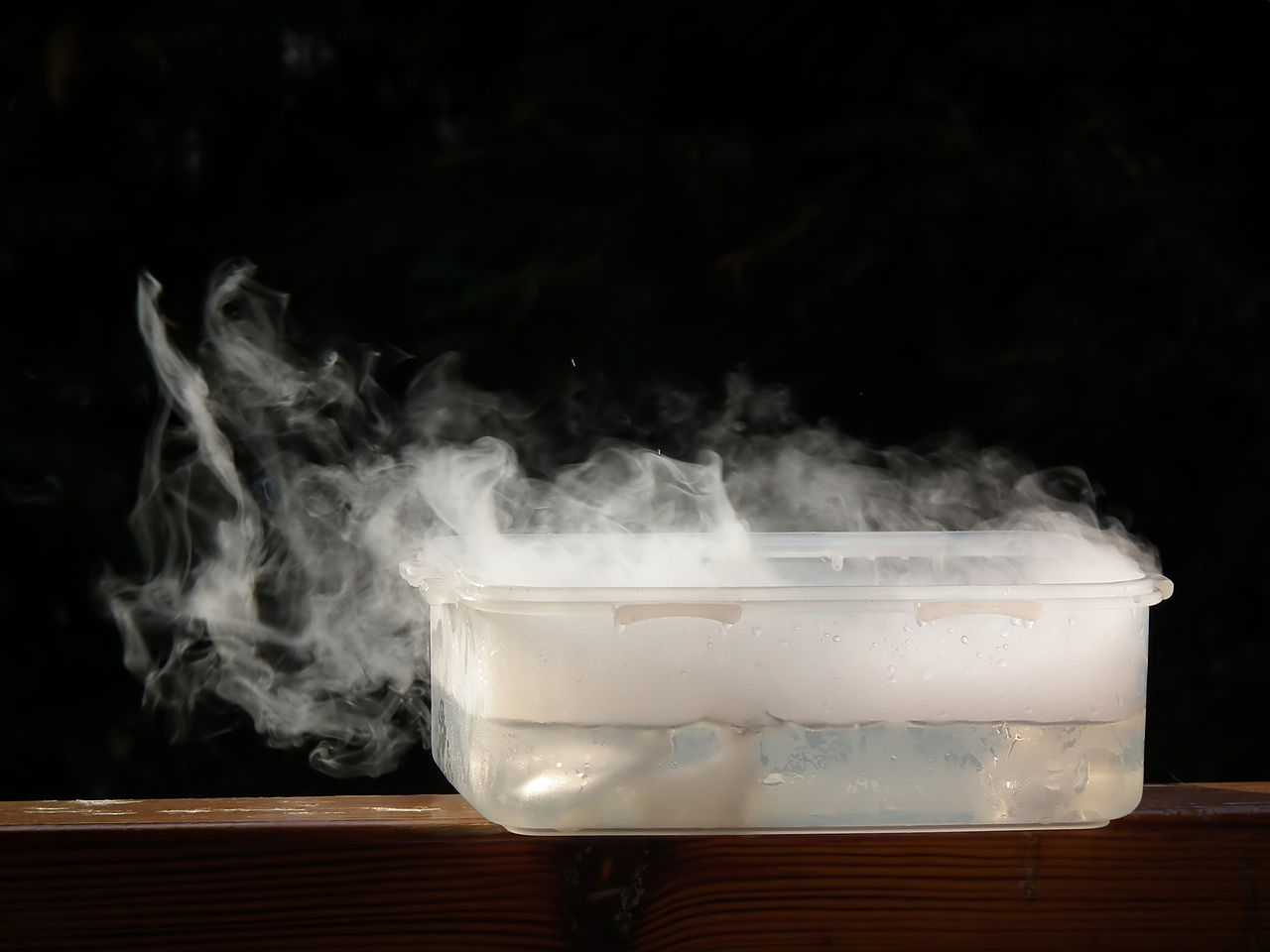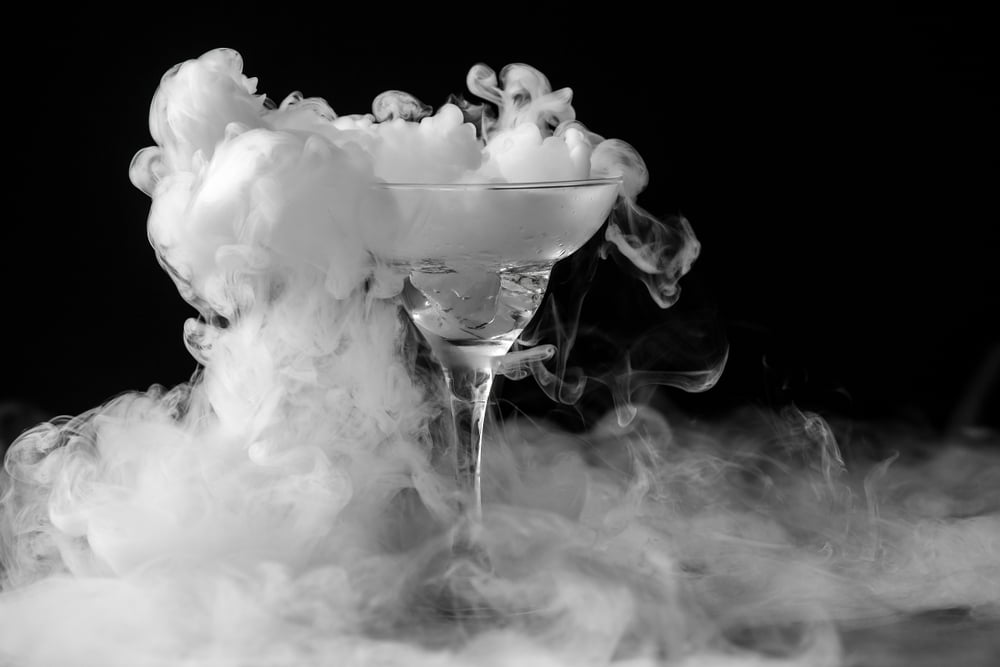Is Dry Ice Turning Into Gas a Chemical Change
The fog you see is. Dry ice sublimating turning from a solid straight into a gas is an example of a chemical change.
695 F the triple point CO 2 changes.
. The sublimation of dry ice into gaseous carbon dioxide is a physical change. At pressures below 513 atm and temperatures above 564 C 2168 K. Dry ice is the solid form of carbon dioxide CO 2 a molecule consisting of a single carbon atom bonded to two oxygen atomsDry ice is colorless odorless and non-flammable and can lower the pH of a solution when dissolved in water forming carbonic acid H 2 CO 3.
Breaking a compound into its constituent elements. Dry ice CO in the solid state turning into CO2 gas. Is dry ice turning into carbon dioxide a physical or chemical change.
Dry ice subliming turning from a solid straight into a gas is an example of a chemical change. It sublimates at -785C or -1093 F at earth atmospheric pressures. Put simply a chemical change changes the chemical structure of a substance and chemical bonds are broken and made whereas a physical change does not do those things.
The secret is in the chemical composition of dry ice which is carbon dioxide in solid form. It does not undergo any chemical changes. As the temperature rises the molecules vib.
The function of this dry ice is to give a smoke effects from the bottom of a stage. The mist that forms when water is poured onto dry ice is just that. Dry ice is actually solid frozen carbon dioxide which happens to sublimate or turn to gas at a chilly -785 C -1093F.
Rusting occurs when metals such as iron react with the oxygen gas in the air. The substance is still the same. To make dry ice carbon dioxide gas is first cooled and pressurized to turn it into a liquid according to Continental Carbonic Products Inc a dry ice manufacturer.
This cloud is similar to the clouds we see in. Classify each of the following as an element compound or mixture and include what state of matter is represented. It is sometimes referred to as cardice.
What Is a Chemical Change. Other function of dry ice is it is used in a ventilation. Which of the following states a chemical property.
You should avoid a direct contact to the dry ice because it can cause frostbites. Because of its low temperature at normal atmospheric pressure it is useful as a coolant. Cooking a steak Chopping wood for a campfire Burning the chopped wood in a campfire 11.
Answer 1 of 3. That smoke has a density between 12 and 16 kgdm 3 Which is bigger than the density of the air so that it wont go up. Energy transferred into a system can also be transferred out of the system.
Initially the gas is much colder than the surrounding air. Physical changes are easy to observe. The liquid is then.
Only a small amount of fog is visible in the air around a piece of dry ice. It sublimates or changes states from a solid to a gas at temperatures of -78 degrees Celsius under normal atmospheric pressure of 1 atm. Think about ice melting into water and then water being heated up and turning into steam.
Chemical changes are very hard to observe. All substances exert a vapor pressure even a stone. For those of us interested in the water cycle sublimation is most often used to describe the process of snow and ice changing into water vapor in the air without first melting into water.
Oxygen is a gas. Its not really a chemical reaction the water is simply turning the dry ice into a gas again. The iron and the oxygen combine to form a new substance called iron oxide or rust.
However if you drop dry ice in water especially hot water the effect is magnified. Label each of the following as a chemical or physical change. Dry ice is the solid form of carbon dioxide CO2 snow-like substance that passes directly into the vapour phase without melting and leaving any residue unlike water ice.
Water vapor condensing in the air from all the very cold gas being thrown off. The chemical structure of water is the same whether it is a solid ice liquid or gas steam. Dry ice is solid.
This comes about because the molecules are constantly vibrating and every now and then obtain enough kinetic energy to break free of the bonds that hold it in the solid or liquid phase. When dry ice is placed into warm water a cloud forms. Carbon dioxide changing from solid dry ice to a gas is a change of physical state the chemical composition and formula still remains the.
A physical change can often to seen with the eye though there are five specific signs of a chemical change. The sudden drop in temperature causes water vapor in the air to condense into tiny droplets forming fog. At room temperature carbon dioxide exists as a gasthe very gas we exhale every time we.
You can watch an ice cube melt and see how the solid is turning into a liquid. Similarly when a material changes phase it only changes physically. A reaction cannot be exothermic overall if activation energy is required.

Watching Dry Ice Turn Into Gas Up Close Is Always Neat Dry Ice Turn Ons Science And Nature

Dry Ice Experiments Compilation Chemistry Youtube

Frozen Carbon Dioxide Dry Ice Sublimates Directly Into A Vapor U S Geological Survey

No comments for "Is Dry Ice Turning Into Gas a Chemical Change"
Post a Comment